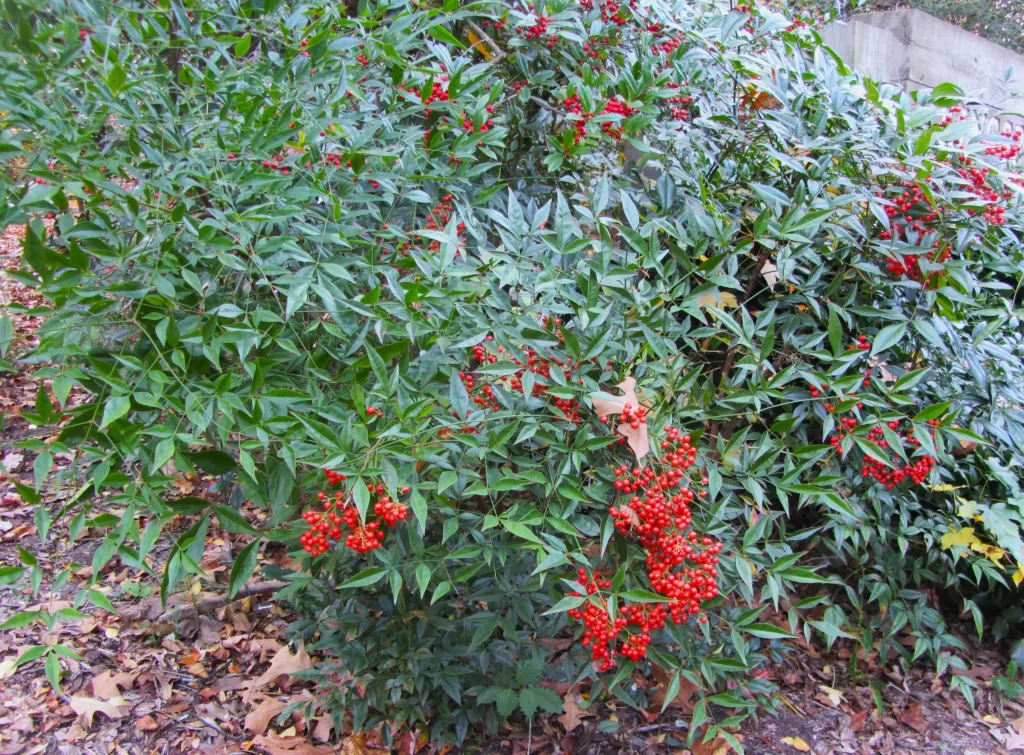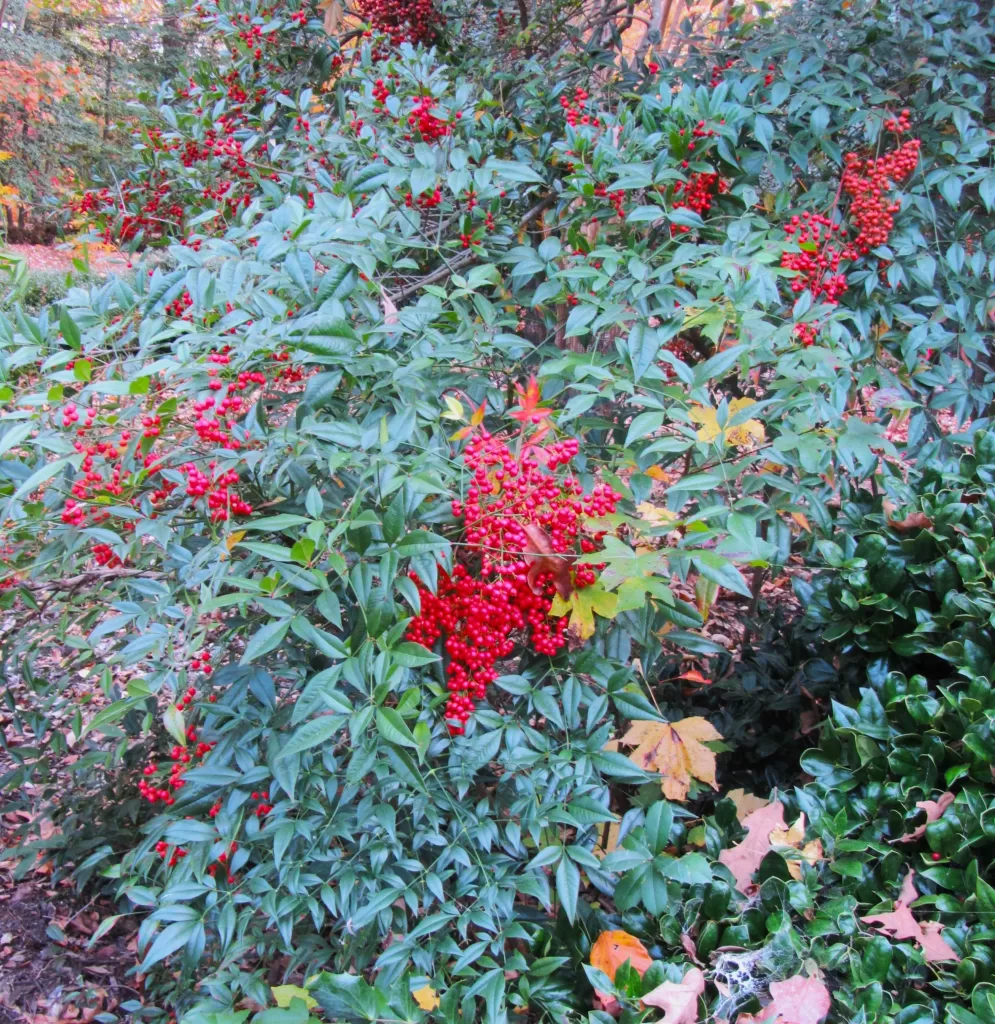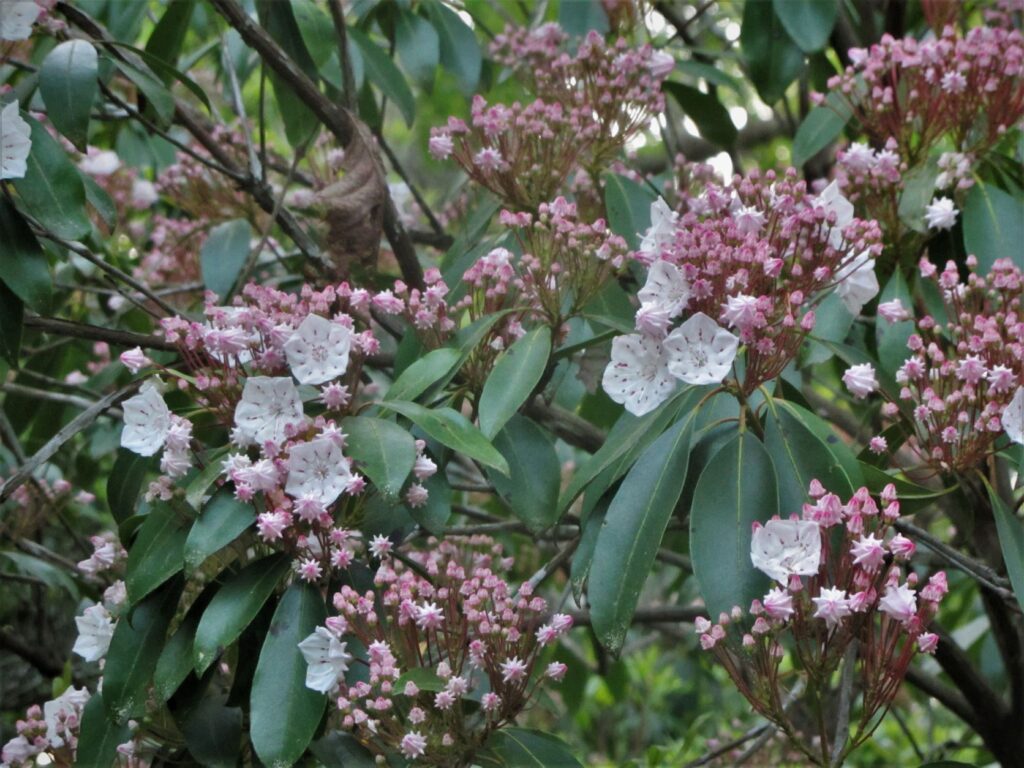The Problems with Nandina
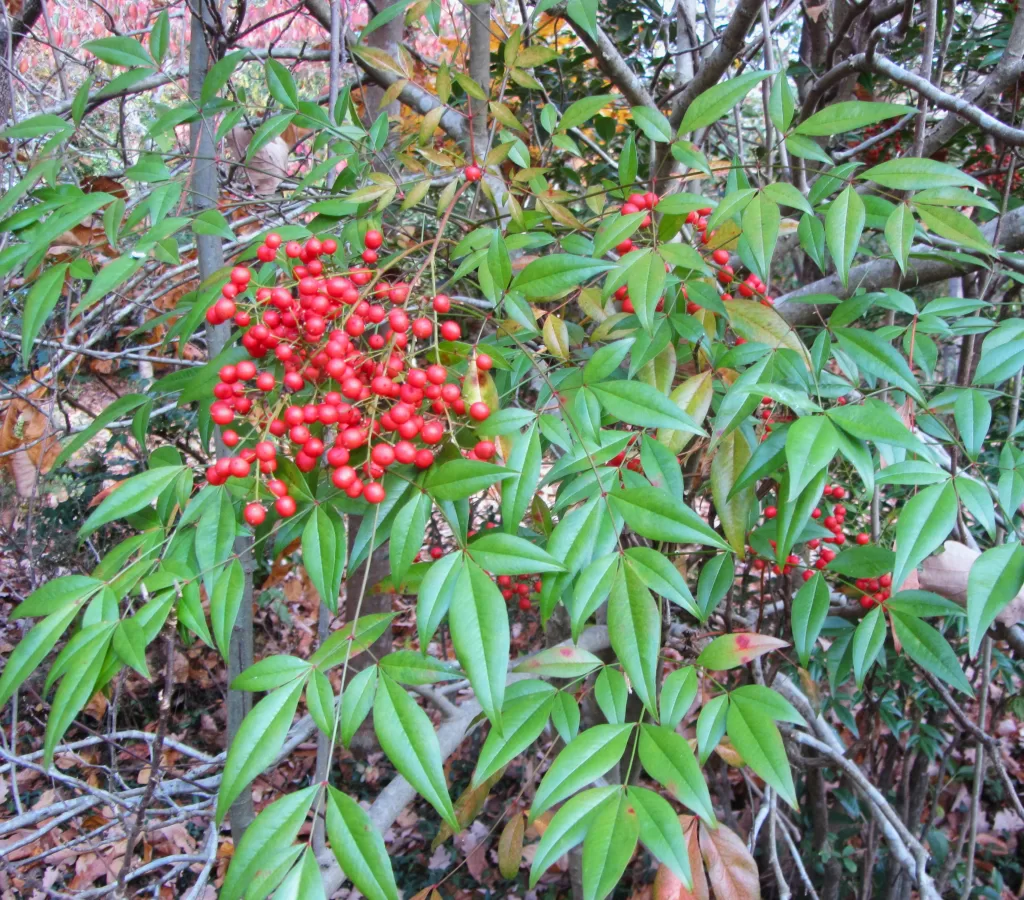
Nandina domestica may also be known as sacred bamboo or heavenly bamboo. All parts of the plant are deadly poisonous.
What’s the big fuss about Nandina? It is attractive, easy to grow, and can be found growing throughout older neighborhoods in our area. Its berries (drupes) turn bright red in October, just in time to brighten up the winter landscape. Some people cut the red fruit for use in holiday decorations. Nandina’s foliage may even turn bright scarlet after frost, depending on the cultivar. It can be a beautiful and useful plant.
Nandina is so tough and versatile that it has been a top pick for landscapers for decades. It was introduced to North America from China in the early 19th century, and has graced yards, parks, and public landscapes ever since. It thrives in most any type of soil, in full sun to partial shade, in Zones 6-9, and has few or no diseases or insect pests. It remains evergreen through the winter, with delicate leaves and slender stems. It has been so popular over the years that its common name is ‘heavenly bamboo.’
A Highly Poisonous Plant
But Nandina domestica has a hidden dark side that most of us would never suspect: it is highly poisonous. Most of us see its red berries and think, “Oh, it will attract the birds.” And that is true, sadly. Because birds that eat more than just a few berries at a time can die from cyanide poisoning.
Cedar Waxwings are at particular risk because they tend to gorge on whatever berries they find during their migration each fall and winter. They eat berries very quickly once they find them, and can ‘overdose’ on the cyanide in Nandina berries. Northern Mockingbirds, Pine Grosbeaks, and American Robins may also eat Nandina berries to the point of poisoning themselves with the fruit.
Nandina is poisonous not only to song birds, but also to pets, horses, livestock, and people. All parts of the plant, including leaves, stems, and berries, contain hydrogen cyanide in sufficient quantity to kill when ingested in quantity. Have you ever noticed that most birds will feast on any other available berries in the winter before eating from the Nandina? One reason is because the berries become less poisonous as they age on the plant during the winter.
Aggressive and Invasive
Not only is Nandina poisonous, but it can also be invasive. Those red, purplish, orange, or white berries contain two seeds each, and those seeds are eager to germinate. You may have noticed all the little Nandina seedlings near an established plant. As the plants age, they form larger and larger clumps. These shrubs can out compete other more desirable landscape plants and most native plants.
North Carolina, and a few other Southeastern states, include Nandina domestica on their official lists of invasive species. Virginia has not yet added Nandina to the official list, although Lewis Ginter Gardens has added it to their ‘Dirty Dozen’ list of problem plants. There are a few sterile hybrids on the market now, which helps with controlling the spread of this species.
Damage Control
If you have Nandina growing in your yard, you may want to consider how important it is to your landscape. If you decide that removing it gives you a planting ‘opportunity’ for a more desirable shrub or tree, then go ahead and cut it down to the ground. Because this shrub is likely to regenerate from its roots, you may consider carefully ‘painting’ the exposed stumps with a systemic herbicide.
If you really love your Nandina’s form and foliage, then you may consider cutting away the clusters of berries as they form, bagging and discarding them to protect the song birds that visit your yard. Composting the fruits isn’t a great idea, especially if you have pets that may still find them. Depending on how mature the berries are when you cut them, they might also germinate in your compost pile.
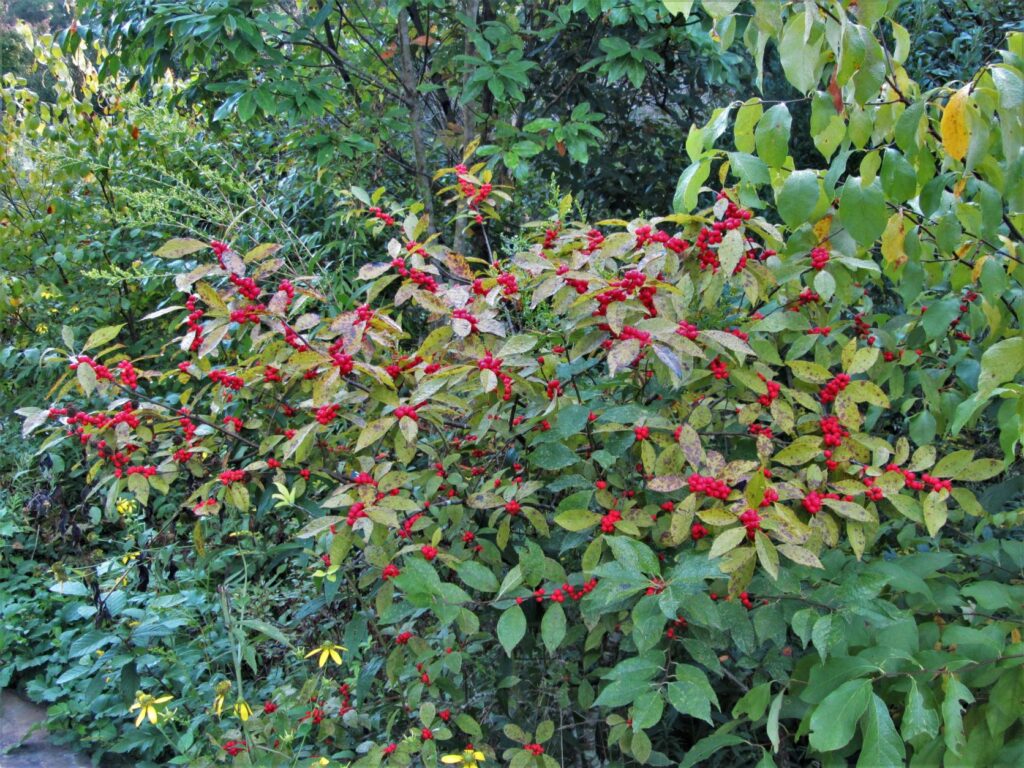
Ilex verticillata, winterberry holly, is a deciduous native holly that thrives in our area. Its fruits support birds and other small animals.
Better Alternatives for Our Williamsburg Landscapes
Nandina is a functional plant for many reasons, and that is why it has remained so popular in the United States and Europe for more than two centuries. If it weren’t so poisonous, it might still be a reasonable choice in many situations. A much better choice to replace any Nandina plants you remove would be either Berberis aquifolium (formerly Mahonia aquifolium), known as Oregon Grape Holly, or one of the many native hollies that thrive in our area. American holly, Ilex opaca, grows into a large tree, but many of the Ilex vomitoria, or Yaupon holly shrubs grow into small, attractive shrubs. I. vomitoria ‘Nana’ or ‘Bordeaux’ are dwarf hybrids that can replace the small round Nandina cultivars nicely. Only the female shrubs produce fruit, and some hybrids are sterile, so it is important to make a choice that fits your needs.
Bayberry/wax myrtle, Myrica cerifera or M. caroliniensis, are other indigenous evergreen native shrubs that produces tiny blue berries beloved by songbirds. Their leaves are small and have a fine texture, similar to Nandina.
Carolina laurel cherry, Prunus caroliniana, is an evergreen shrub or small tree that blooms each spring and produces abundant black drupes in fall. While the fruit is poisonous to humans, birds and small mammals depend on them for fall and winter food. This shrub is also a larval host plant for butterflies, and provides excellent habitat. It has beautiful, glossy green leaves and can be pruned as needed to maintain its size.
Native mountain laurel, Kalmia latifolia, has spectacular bloom each spring and is a more attractive plant overall than is Nandina. Every part of it is poisonous too, however, birds enjoy its brown seed capsules without any harm.
Eastern red cedar spends many years as a fine-foliage shrub sized plant before maturing into a tree. The female of this species produces an abundance of blue berries to support birds through the winter while also offering excellent shelter and nesting spots All of these choices are evergreen and support pollinators, birds, and other small animals.
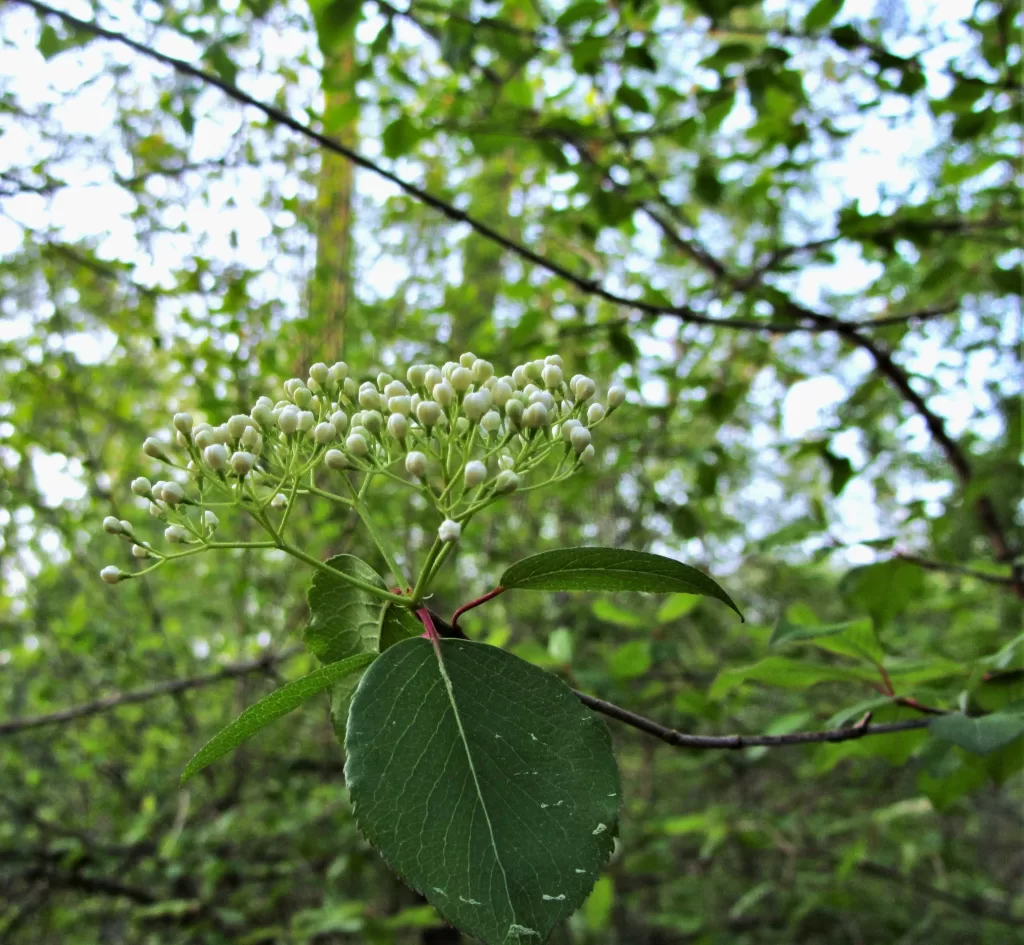
Viburnum prunifolium, blackhaw Viburnum, produces colorful drupes beloved by birds each autumn. It blooms in April.
Deciduous Alternatives to Nandina
Other good replacements include common witchhazel, Hamamelis virginiana, which blooms in late winter and ripens its seeds for winter feeding; Arrow-wood Viburnum, Viburnum dentatum, which has showy spring flowers and produces black drupes in early fall; and beautyberry, Callicarpa americana, which produces showy purple edible berries in September, beloved by many types of birds.
There are more than 50 Viburnum species and hybrids that thrive in our area, but not all of them are indigenous to the American Southeast. These are deciduous species, yet are beautiful, functional plants and support wildlife.
Whether you are most concerned with beauty for your yard, providing food and shelter to attract birds and other wildlife, or you simply want an evergreen shrub for winter structure in your landscape; you will find much better selections available than the common Nandina planted by many residential landscapers. Why not consider the alternatives and make a better choice? Autumn is the best season of the year in our area for planting new shrubs and trees, because they have time to settle in and establish their roots before the heat and stress of another summer.
For More Information:
Bailes, Christopher. Hollies for Gardeners. Timber Press. 2006.
Dirr, Michael A. Dirr’s Encyclopedia of Trees and Shrubs. Timber Press. 2011.
Dirr, Michael A and Keith S. Warren. The Tree Book: Superior Selections for Landscapes, Streetscapes, and Gardens. Timber Press. 2019.
International Dendrology Society. Trees and Shrubs Online. https://www.treesandshrubsonline.org/ 2023
Tornio, Stacy. Plants That Can Kill: 101 Toxic Species to Make You Think Twice. Skyhorse Publishing. 2017.
“Toxicity of Nandina Berries to Birds.” Elisabeth C. Miller Library at the University of Washington. https://depts.washington.edu/hortlib/pal/toxicity-of-nandina-berries-to-birds/. November 2023.
Appreciation to Master Gardener Tree Steward and Master Naturalist Rick Brown for his assistance with research for this article.
All photos by Elizabeth McCoy, Master Gardener Tree Steward

